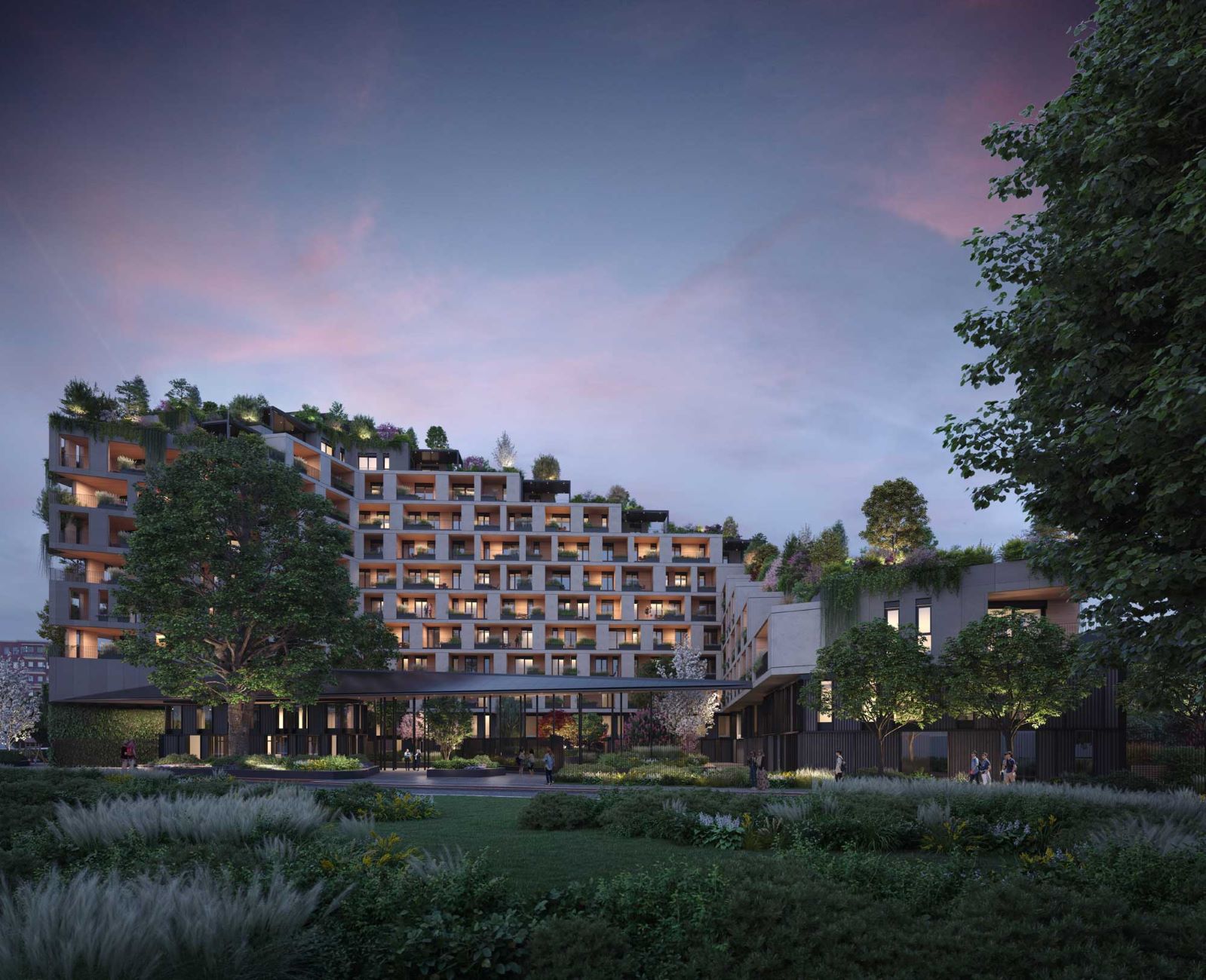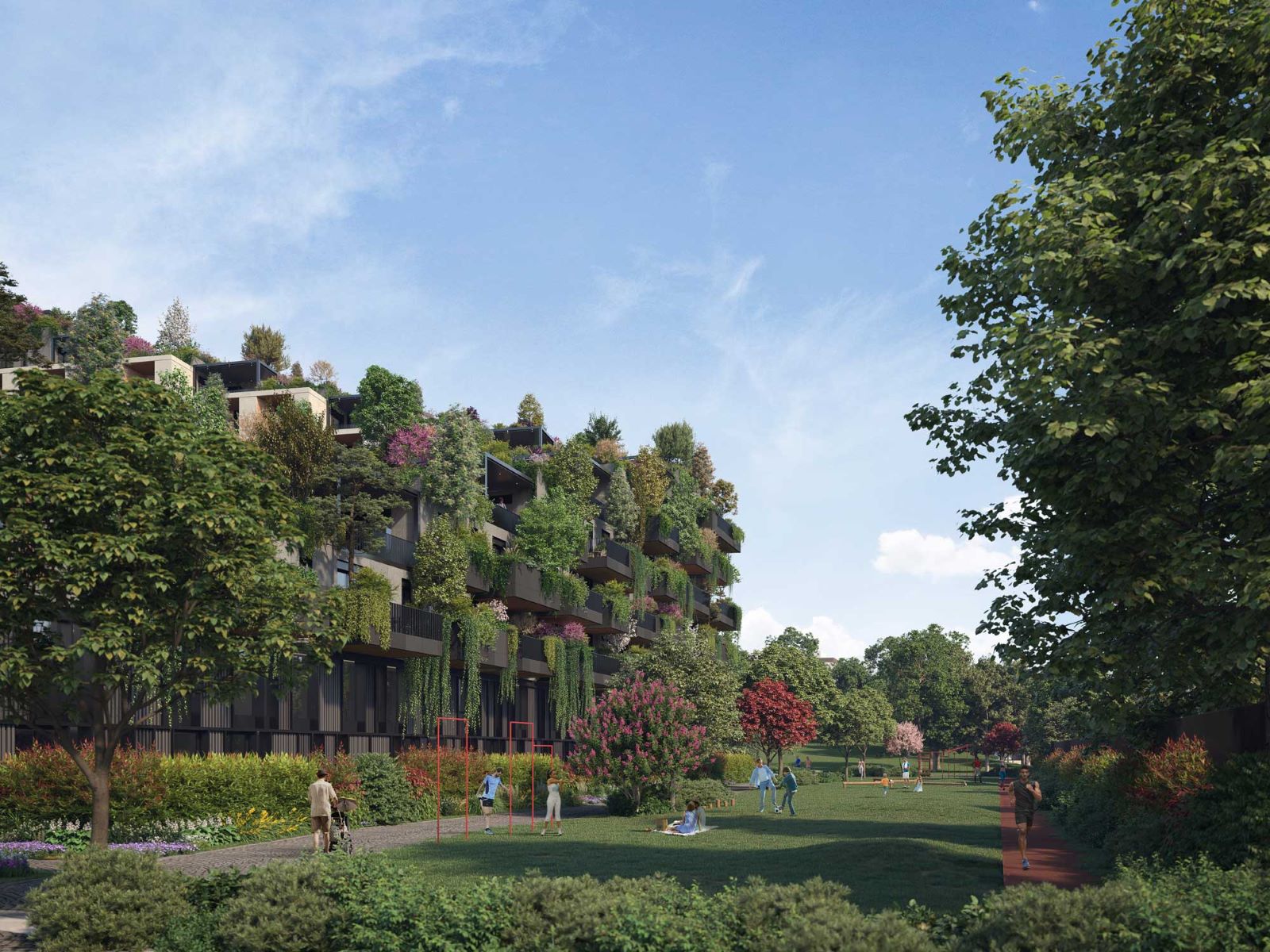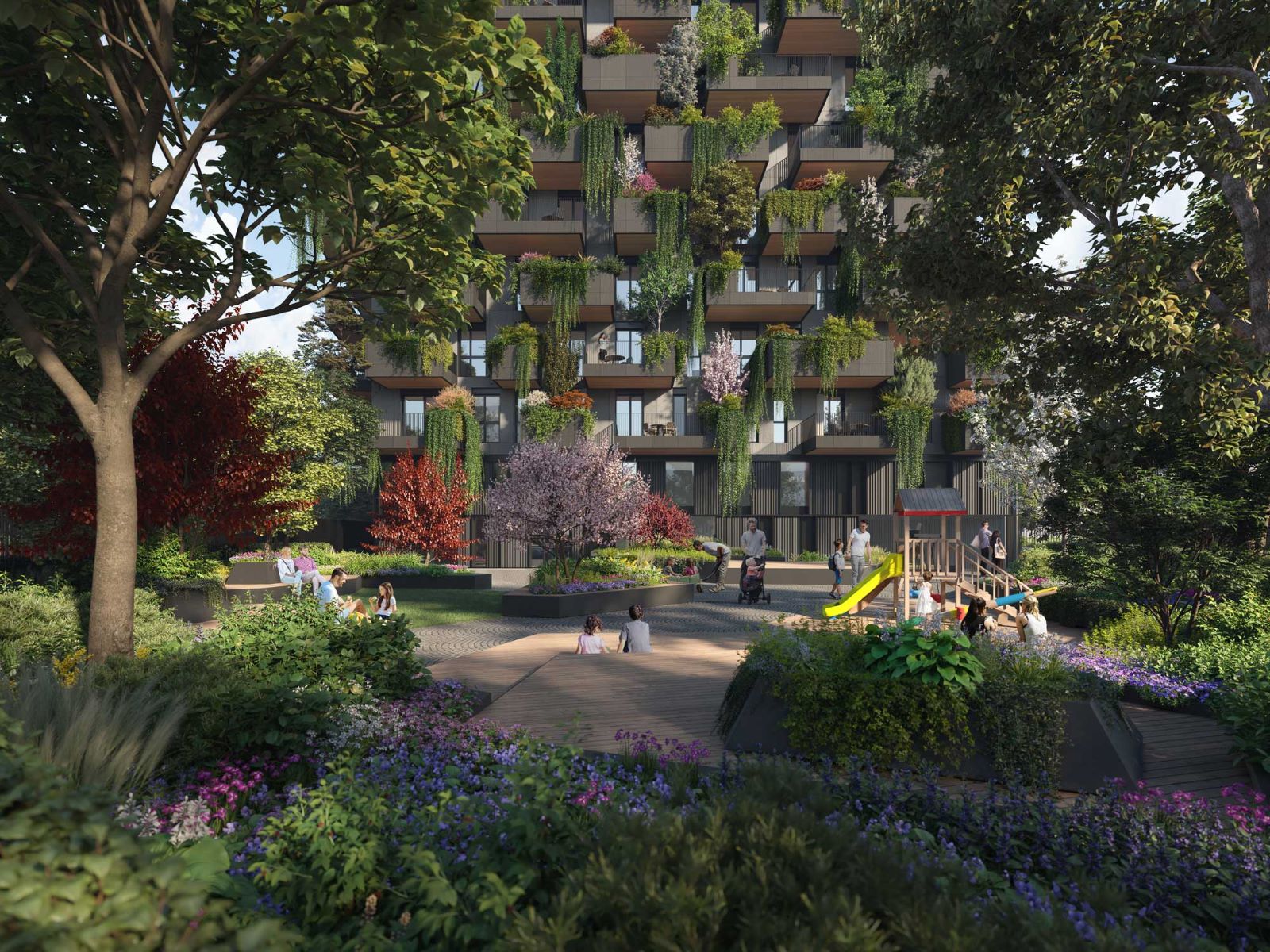Bosconavigli is the name of the project designed by Stefano Boeri Architetti to change Milan’s urban landascape and establish a notable sense of continuity between the Tortona-Porta Genova area through a vision capable of enhancing the changing scenario of this urban area.

The intervention appears as a traditional courtyard house perfectly inserted within the Lombard tradition and designed to stimulate the dynamic use of public and private spaces. Developing around an open courtyard with an ascending spiral form, it extends towards the south in the direction of a large garden.
High energy performance photovoltaic panels completely cover the building’s roof, while the three main façades are notable for an alternating system of balconies designed to accommodate plants and bushy trees and are characterized by numerous entrances and views out onto Via San Cristoforo which visually expand the connection between the internal spaces of the courtyard and the new green spaces of the surrounding public park.

On the ground floor, particular attention was paid to the system of movement of people and routes: in particular, the large south portal expands the visual effect of connection between the spaces inside the courtyard and the surrounding areas used as a public park by means of a lightweight canopy.
The communal areas of the building are located on the same frontage so as to generate a fluid and constant interplay between the private residential areas and the new public spaces in the neighbourhood. In one section of the ground floor and a part of the first floor there are also public services including a double-height bistro-restaurant and a wellness facility with swimming pool, gym and sauna.

The architectural space presents a striking contrast between the façades that look out on the internal courtyard and those that interact with the outer urban fabric. The former, characterized by loggias, generate a network of both full and empty spaces, thereby ensuring a considerable supply of natural light and reinforcing the visual link between inside and outside.
In conclusion, the Bosconavigli is becoming a pivotal point between a neighbourhood historically dedicated to fashion and design and the residential and tourist area that extends along the Naviglio Grande, combining the architectural canons of the traditional Milanese courtyard house and the contemporary dynamics of sustainability and usability of public and private spaces.


